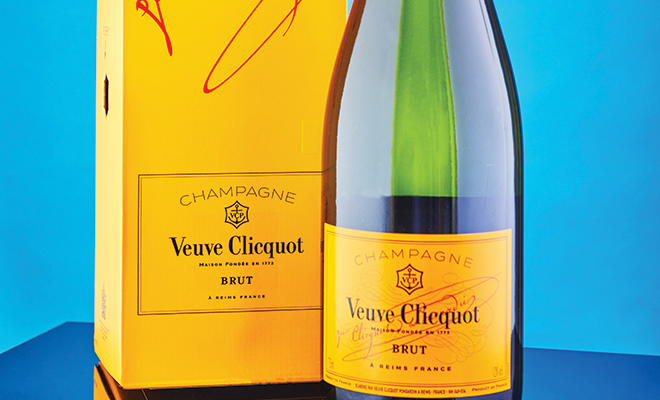
The Veuve Cliquot: A Woman of Resilience and Strategy
Once upon a time in 18th century France, and indeed in much of the civilized world, a woman’s inherited property passed to her husband (or she was passed over in favor of males in the line of succession). What’s a 21-year-old woman to do? Accede to societal mores and then devise a way to circumvent them.
Barbe-Nicole Ponsardin, born December 16, 1777, was the daughter of an affluent textile industrialist in Reims, France. It was the early years before the French Revolution, and she watched carefully as her father, Ponce Jean Nicolas Philippe Ponsardin, navigated the political climate and allowed his family to escape the ravages of the revolution and the erratic behavior of Napoleon Bonaparte.
Francois Cliquot, son of Philippe Clicquot, also a successful textile manufacturer and competitor of Ponsardin, and Barbe-Nicole married in 1768, the equivalent of an arranged marriage that consolidated the business power and finances of the two companies. According to some accounts, possibly fictional, Barbe-Nicole and Francois were childhood friends, and so a partnership as well as marital relationship developed. Francois was interested in developing his family’s small wine-making business, and Barbe-Nicole was all in as she learned the craft of growing grapes and making wine, bolstered by her family’s history. One of her grandmothers had been part of a wine-making operation in years past; it’s said she had Le Nez, the extraordinary sense of smell that some vintners are born with. Barbe-Nicole might have inherited this sensitivity!
As the Napoleonic Wars churned on and created havoc for business in eastern and western Europe, Barbe-Nicole and Francois continued their efforts, until Francois fell ill with what most likely was typhoid and died. Both families were devastated, and Philippe Cliquot determined to end the wine-making sideline.
“Barbe-Nicole goes to her father-in-law and says, ‘I’d like to risk my inheritance, I’d like you to invest the equivalent of an extra million dollars in me running this wine business.’ And he says yes,” explains Tilar Mazzeo, author of The Widow Clicquot, a 2008 business biography. “It’s surprising that he would let a woman who has no business training take this on, and what it speaks to is that Philippe Clicquot was no fool. He understood how very keenly intelligent his daughter-in-law was.”
As Veuve, or Widow, Cliquot, Barbe-Nicole agreed to an apprenticeship under the well-known winemaker Alexandre Fourneaux, but after four years the business was floundering. She again approached her father-in-law for financing and he agreed once again. Savvy and forward-thinking, Barbe-Nicole recognized that the wars were ending and, as she had in her cellars what would become known as the legendary vintage of 1811, she gambled that the Russian market was ready for the kind of champagne she made, an extremely sweet champagne containing almost 300 grams of sugar.
Commercial shipping had been severely curtailed during the wars, so she took a huge gamble and smuggled most of the best wine to Amsterdam, and as soon as peace was declared, the bubbly headed to Russia. Tsar Alexander loved it, and the Russian court, the proving ground for the vintage, launched Barbe-Nicole Ponsardin Cliquot into international marketing.
As demand for her champagne grew, she realized the process of fermenting and clarifying the liquid must be refined, improved and accelerated so she could meet the orders flowing in. Champagne is made by adding live yeast and sugar to bottles of white wine, creating secondary fermentation. The yeast digests the sugar, leaving alcohol and carbon dioxide, the bubbles. But then the yeast dies, leaving a bottle of sparkling wine and unappetizing dead yeast in the bottom. The winemaker’s solution was to pour the champagne from bottle to bottle to get rid of the yeast, wasting time and bubbles, damaging the wine.
Barbe-Nicole’s solution was to upend the way champagne underwent its secondary fermentation. Literally. She turned the bottles upside down into a device used today called a riddling rack, where they were gently rotated and the dead yeast collected in the neck of the bottle. “The invention of riddling allows the mass-production of an artisanal and luxury product, just not at the tiny quantities that they were dealing with before,” Tilar Mazzeo explains. “Barbe-Nicole begins exporting wine around the world in large quantities and is known as being one of the great businesswomen of her century.”
And she never remarried, although Rebecca Rosenberg, author of a delightful volume of historical fiction, Champagne Widows, hints at a flirtation with her sales manager. According to Rosenberg, Louis Bohne asked her to marry him, but Napoleonic Code was still in place; take a guess what she said. The novel is rich in historical detail and a fun read that brings life to this determined businesswoman.
Sources: smithsonian.com and wikipedia.com.







